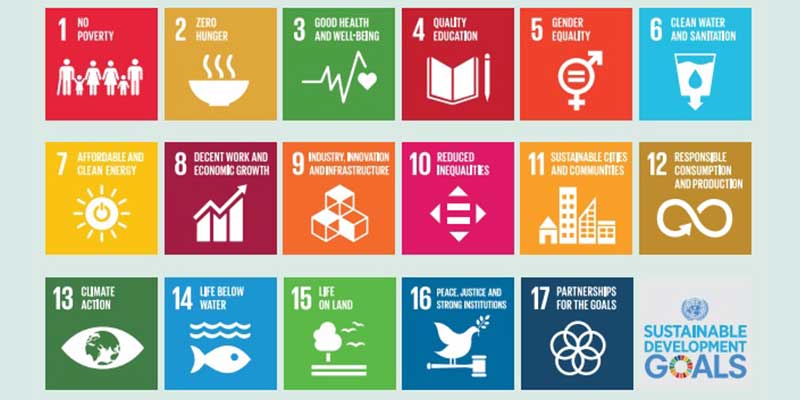- India
- Jun 25
India ranks 99th on 2025 SDG Index
• India has for the first time secured a place among the top 100 out of 167 countries ranked for their progress in achieving the Sustainable Development Goals (SDGs).
• According to the UN Sustainable Development Solutions Network’s 10th and latest Sustainable Development Report (SDR), India ranks 99th on the 2025 SDG Index with a score of 67.
• India was ranked 109th in 2024.
• The score measures progress on a scale of 0 to 100 where 100 indicates a country has achieved all 17 goals and 0 means no progress has been made.
• European countries, especially the Nordic nations, continue to top the SDG Index, with Finland ranking first, Sweden second and Denmark third.
• Finland has a score of 87.
• A total of 19 out of the top 20 countries are in Europe.
• However, even these countries face substantial challenges in achieving several SDGs, notably SDG 2 (Zero Hunger), SDG 12 (Responsible Consumption and Production), SDG 13 (Climate Action) and SDG 15 (Life on Land), partly driven by unsustainable consumption patterns and negative international spillover effects.
• At the global level, none of the 17 goals are currently on course to be achieved by 2030.
• Conflicts, structural vulnerabilities, and limited fiscal space impede SDG progress in many parts of the world.
• But while only 17 per cent of the targets are on track to be achieved worldwide, most UN member states have made strong progress on targets related to access to basic services and infrastructure, including mobile broadband use (SDG 9), access to electricity (SDG 7), internet use (SDG 9), under-5 mortality rate (SDG 3), and neonatal mortality (SDG 3).
• By contrast, most countries are either stagnating or backsliding on the following five targets — Obesity rate (SDG 2), Press Freedom Index (SDG 16), Sustainable Nitrogen Management Index (SDG 2), Red List Index (SDG 15) and Corruption Perception Index (SDG 16).
Sustainable Development Goals (SDGs)
• The Sustainable Development Goals (SDGs) were adopted by all UN member states in 2015 as a universal call of action to end poverty, protect the planet and ensure that all people enjoy peace and prosperity by 2030.
• Also known as the Global Goals, the SDGs are a call to action to create a world where no one is left behind.
• It consists of 17 goals and 169 targets.
• The SDGs are the blueprint to achieve a better and more sustainable future for all. They address the global challenges we face.
• The SDGs are a call for action by all countries – poor, rich and middle-income – to promote prosperity while protecting the planet.
• They recognise that ending poverty must go hand-in-hand with strategies that build economic growth and address a range of social needs including education, health, social protection, and job opportunities, while tackling climate change and environmental protection.
The 17 SDGs are:
1) No poverty: End poverty in all its forms, everywhere.
2) Zero hunger: End hunger, achieve food security and improved nutrition, and promote sustainable agriculture.
3) Good health and well-being: Ensure healthy lives and promote well-being for all, at all ages.
4) Quality education: Ensure inclusive and equitable quality education and promote lifelong learning opportunities for all.
5) Gender equality: Achieve gender equality and empower all women and girls.
6) Clean water and sanitation: Ensure availability and sustainable management of water and sanitation for all.
7) Affordable and clean energy: Ensure access to affordable, reliable, sustainable and modern energy for all.
8) Decent work and economic growth: Promote inclusive and sustainable economic growth, full and productive employment, and decent work for all.
9) Industry, innovation and infrastructure: Build resilient infrastructure, promote inclusive and sustainable industrialization and foster innovation.
10) Reduced inequalities: Reduce inequality within and among countries.
11) Sustainable cities and communities: Make cities and human settlements inclusive, safe, resilient and sustainable.
12) Responsible consumption and production: Ensure sustainable consumption and production patterns.
13) Climate action: Take urgent action to combat climate change and its impacts.
14) Life below water: Conserve and sustainably use the oceans, seas and marine resources for sustainable development.
15) Life on land: Protect, restore and promote sustainable use of terrestrial ecosystems, sustainably manage forests, combat desertification, halt and reverse land degradation, and halt biodiversity loss.
16) Peace, justice and strong institutions: Promote peaceful and inclusive societies for sustainable development, provide access to justice for all, and build effective, accountable and inclusive institutions at all levels.
17) Partnerships for the goals: Strengthen the means of implementation and revitalise the global partnership for sustainable development.
Manorama Yearbook app is now available on Google Play Store and iOS App Store



